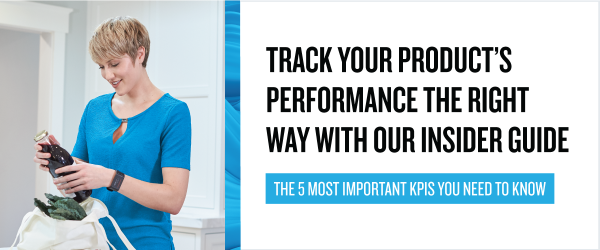When the idea for a consumer packaged goods (CPG) product is born, it’s immediately assessed in terms of the consumer. Will consumers buy it? Will they buy it at a price that makes you a profit? Will they love it? Will consumers love this product so much, they tell their friends about it? Will those consumers buy and love it?
Then when your idea comes to fruition and you’re ready to bring the product to market, the ‘business’ of CPG manufacturing shifts to the retail buyer: Which retailer will buy my product? Will they take enough volume? Will they give my product the right shelf position and promotional support?
It’s natural for small and mid-sized CPG manufacturers to devote a significant amount of resources to meet their buyers’ expectations and get their product on the shelf, because these aren’t easy tasks. In every new buyer meeting, you have to demonstrate your product’s potential or current performance relative to competitors within your category, in the retailer’s channel, and in the geography you’re distributing in.
But it’s important to remember that consumers drive that performance. And understanding your consumer can help you in your retail buyer meetings, your next line review, and in growing and maintaining your distribution.
Identify your consumer
As a CPG manufacturer, you probably have a general idea about your product’s typical end user, or maybe your ideal customer. But with specific demographic and behavioral data on the consumers who actually purchase your product, you can start to make compelling arguments to your buyers and potential buyers that your product deserves a space on their shelves.
This includes identifying who these consumers are, how they interact with your product, and how they interact with different products and brands. The right data could tell you that the person who typically buys your product supports a large family (spouse and four children) on a middle class income ($50,000-65,000 annually) and owns their own home. It can also tell you that they spend more on your product’s category than any other category, and that they purchase your product more frequently than your competitors’.
Utilizing your understanding
What can you do with this consumer knowledge? Consumer insights can be useful for modifying or optimizing your product offering, adjusting your selling price, and informing a variety of business decisions. But they can be most impactful in a retail buyer meeting or a line review.
Take the example above: If you know your product is selling well with middle-income homeowners of large families—and you know from account-level data that your retail buyer struggles to get this demographic through their doors—you can make a compelling case that the retailer needs to carry the kind of product you manufacture. Furthermore, because your typical customer buys your product more frequently than others in your category, you can argue that it should be your product, not your competitors’, on the retailer’s shelf.
The right consumer data can also tell you how much your consumers spend per trip to the store, and if they tend to make more trips than other demographics. This allows you to demonstrate to your retail buyer that if your product can convert that consumer into a frequent customer, they stand to increase their sales just by carrying your product. Increased visit frequency multiplied by increased spend per visit is the kind of math your retail buyers like to hear.
This kind of information makes a big difference in a retail buyer meeting because it doesn’t just show how your product has performed historically, it shows how your product can impact the retailer’s bottom line going forward. Getting to know your consumer with data can be the differentiator you need to win your next buyer meeting and get the results your product deserves.
A resource to help you prepare
Knowing who your consumers are and where they shop is only one part of the CPG puzzle your buyers expect you to know and be able to complete. To get your products on the shelf, you’ll need to walk into retail buyer meetings fully prepared.
Track your product’s performance the right way with our insider guide: The 5 Most Important KPIs You Need to Know.





